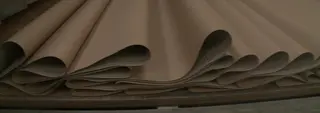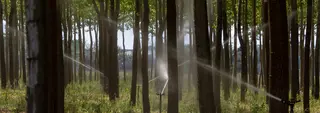
Explore the modern day story of the U.S. paper industry—an industry that’s worked in tandem with nature for many years. Explore how the industry uses every part of the tree, leaving nothing wasted. How recycling, the familiar part of paper’s sustainability story, is just one way the industry cares for the planet. And, how the people who depend on forests for a living replant trees—in fact, nearly twice the volume of trees are replanted.
You try to reuse and reduce—and chances are you recycle. At least, that’s what the numbers suggest when it comes to paper, one of the most recycled materials in the United States.
Without the work of people like those in the new film "Paper Makers", we wouldn’t recycle as much as we do. For generations, the paper industry, that makes paper, boxes and packaging, has helped build the recycling system we use every day.
The stars of "Paper Makers" know this well. “All the tree is put to use,” says Alex Singleton, a fiber specialist in Georgia whose family has been in the paper industry for four generations.
In fact, the paper industry starts to recycle even before a single box has been made. By “recycling” byproducts into biomass energy, paper mills ensure that no part of the tree goes to waste, minimizing human impact on the environment.
Malisa Maynard, an environmental safety professional who works for a pulp and paper products manufacturer based in Washington state, makes sure her teams approach biomass “recycling” wisely. “Each mill has sustainability teams to improve the mills,” Maynard says. “Our Arkansas mill tracked metrics, identified waste and figured out a way to transition it into an input material. It was a win for that mill as well as others.”
Product design is a win too: Engineers constantly innovate to make paper products that are easy for recyclers to handle properly. Since some areas are unable to accept mixed-material packaging for curbside recycling, designers create all-paper packaging that makes it simple for the public to recycle. For example, one manufacturer recently created a folding carton made of 30% recycled fiber that is compliant with U.S. Food and Drug Administration guidelines for food contact.
Paper Recycling: An Easy Way for People to Take Action
These innovations are part of why there’s such a high paper recovery rate: In 2023, 71-76% of corrugated cardboard packaging and nearly 65-69% of paper is recycled in the U.S. Approximately 80% of U.S. paper and packaging mills use some recovered paper fibers in their products, and most corrugated boxes are made from 70% to 100% recycled material.
When paper fibers have been recycled so much that they can’t be made into new paper and packaging products, some are turned into molded fiber products, like egg cartons or coolers. Want to learn more? We've got a whole page dedicated to new sustainable innovations.
The pulp and paper industry does its part—and so does everyone who recycles. Each time you recycle paper products, you’re minimizing the human impact on the environment. And, helping to reuse valuable resources again and again.



